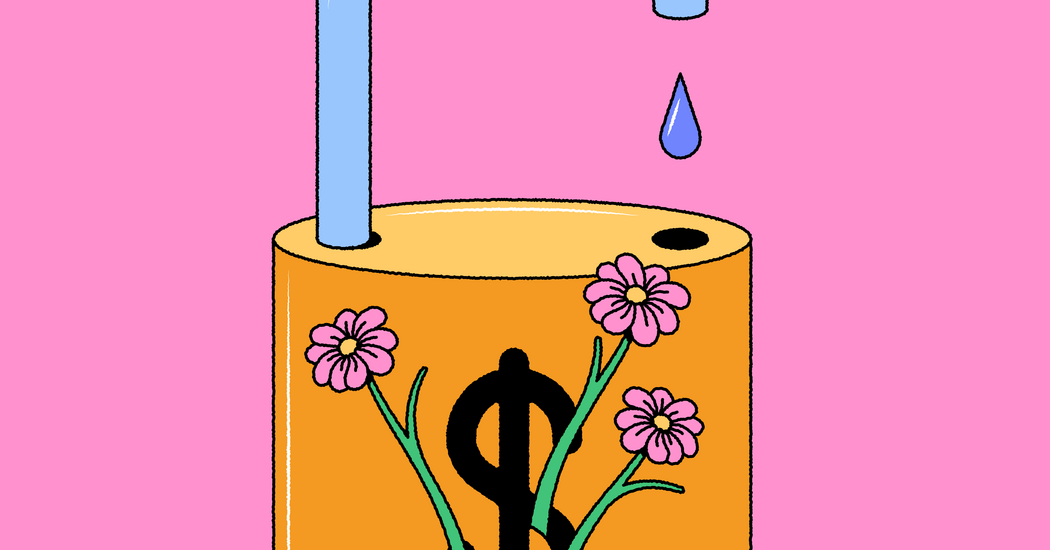With more interest rate cuts a possibility, it may be a good time to lock in current rates in your savings, if you haven’t already.
The Federal Reserve cut its key rate by a quarter point in September, the first time it has lowered rates this year. The Fed may make another cut at its meeting next week — and perhaps another at its final session of the year in early December — as officials try to balance worries about inflation with signs of a cooling job market.
That suggests rates on deposit accounts may also decline, since they tend to follow the Fed’s benchmark rate — although other factors, like competition for customer deposits, can also influence rates at different banks.
Generally, rates on deposit accounts have retreated since last year, when it was easy to get rates of 5 percent or more on federally insured high-yield savings accounts and certificates of deposit.
Traditional brick-and-mortar banks continue to pay paltry rates, as they have for years; the overall average savings account rate is just 0.40 percent, according to the Federal Deposit Insurance Corporation.
It’s still possible, however, to earn around 4 percent or more at banks that operate primarily online. That means your money is beating inflation, which was 2.9 percent in August. (Federal inflation data for September is expected to be released Friday — later than usual, because of the government shutdown.)
No one can say for sure, however, what the Fed will do in the coming weeks, said Odysseas Papadimitriou, chief executive of the financial website WalletHub. He cautioned against locking up cash in a certificate of deposit, unless you are confident you won’t need the money during the term of the C.D. If you have savings you know you won’t need for a while, however, and want to earn a competitive rate, it may be a good time to consider your options.
High-yield savings account vs. certificate of deposit.
High-yield savings accounts offer flexibility — you can withdraw your money whenever you want, without penalty. That makes them particularly useful for emergency savings, which should be available quickly if you need the funds — for, say, a car repair or an unexpected medical bill, or to cover expenses if you lose your job.
“It really depends on what the money is for,” said Stephen Kates, a certified financial planner and an analyst at the financial website Bankrate.com.
If the funds are meant to be used for an unexpected cash crunch, the rate should be less of a priority, Mr. Kates said. “You get what you get,” he said. “It has to be safe and liquid.”
The downside with a savings account is that the bank can change the rate whenever it wants — and may well do so if the Fed lowers its key rate again.
That means savers must decide which is more important to them: easy access to their money or a dependably higher rate typically available with C.D.s.
Barclays Bank was recently offering a “tiered” savings account, with a rate of 3.9 percent on balances below $250,000. Balances at or above that level, up to $1 million, earn 4.1 percent.
Do you have a specific savings goal?
Rates on certificates of deposit are set for a specific term, so you are assured of getting a given rate over that period, even if the bank lowers its offering rate after you open the account. For retirees and others who want a safe place to store cash that generates some income, C.D.s may be preferable, Mr. Kates said.
The downside is that if you want to withdraw your money before the C.D. term ends, you’ll pay a penalty — typically, a month or two of interest.
Evan Loomis, a certified financial planner in Glendora, Calif., said savers should ask themselves: “What’s the need? What’s the comfort zone?” If you can tie the money to a specific goal — say, next year’s college tuition — a fixed-term option may be best.
Is there a way to make C.D.s more flexible?
Some banks offer “no penalty” C.D.s, typically at a lower rate, that allow you to withdraw money early without forfeiting interest.
Building a C.D. ladder by opening several certificates with different terms to maturity can help minimize the length of time you are without access to your cash, while locking in an attractive interest rate, said Amy Miller, director of America Saves, an initiative of the Consumer Federation of America. “You can stagger the C.D.s so you have more flexibility,” she said.
Let’s say you have saved $20,000. You could open four certificates of $5,000, with a three-month term, a six-month term, a one-year term and a two-year term. When the first C.D. matures, you can spend the money if you need it — or open a new, two-year C.D. to keep the progression going.
Some banks may offer C.D. rates at slightly different terms — say, seven months instead of six, or 14 months instead of 12 — depending on their needs and competition in their market, Mr. Kates said. The difference between a month or two of interest may not make a big difference, but could make sense if you don’t mind adding extra time to the term of the certificate.
What C.D. rates are available now?
Capital One was recently offering 3.85 percent on a one-year C.D. with no minimum deposit. Marcus, the online savings bank of Goldman Sachs, was offering a 14-month C.D. at an annual percentage yield of 4.1 percent, with a minimum deposit of $500.
Historically, banks paid higher interest rates for longer-term C.D.s to encourage customers to lock up their money for extended periods. But that approach has recently changed because many economists expect rates to fall, according to the credit bureau Experian. Banks don’t want to commit to paying more than they need to in the future, so longer-term rates are generally lower right now.
The shift can be seen in offers at various banks. Synchrony, for instance, was recently offering 4.1 percent on a six-month C.D. but 3.5 percent on a 24-month certificate. And Sallie Mae bank was offering 3.9 percent on a six-month C.D. but 3.75 percent on a 24-month certificate.
What if an unfamiliar bank is offering a good rate?
Some people may be wary of depositing cash at a bank they find online if it’s not a household name. That can cost them, Mr. Papadimitriou said, because big national banks generally offer very low rates on basic savings and checking accounts. To reassure themselves, he said, consumers can check a bank’s website for the F.D.I.C. logo, indicating that deposited funds are protected if the bank fails. They can also search the F.D.I.C.’s BankFind tool to confirm that a bank is listed there.
Should I consider a credit union?
Credit unions may offer competitive rates on C.D.s, which some credit unions refer to as “share certificates.” There are rules about who can join a credit union, but they often can be flexible, Ms. Miller said — you typically must live or work in a community, or regularly do business there.
The post Pay Attention to Your Savings Now, Just Before the Fed Considers a Rate Cut appeared first on New York Times.




